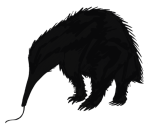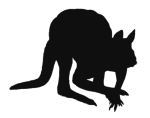
Australia is home to some of the most unique species worldwide, including egg-laying mammals, tree-climbing, desert-bouncing and and burrow-digging marsupials, and huge flightless birds. While these animals are fascinating, the creatures that used to roam Australia’s landscape thousands of years ago were even more remarkable — these included wombat-like beasts as big as rhinos, birds more than two metres tall, lizards more than seven metres long, and a marsupial lion as big as a leopard.
Just how and why these animals went extinct has been challenging scientists for decades. But examining dated fossil records is one of the primary ways we can look into the past. The ever-increasing number of fossils and the advances in dating techniques have produced a wealth of material we can use to reconstruct the long-lost past.

The FosSahul database was first established in 2016 to try to alleviate these problems — it gathered all the fossil specimens for large animals (excluding humans) from the Late Quaternary (up to ~ 1 million years before present) across the region known as ‘Sahul’, the combined super-continent that included New Guinea and Australia when sea levels were much lower than they are today.
While FosSahul was an important step, the database needed to be updated. First, the quality rating of the fossil dates in the original version was a little subjective and lacked transparency in some cases. This is because the database did not capture enough detail to be able to reproduce all the steps leading to a particular quality rating. Second, given that new fossils are discovered regularly, updates are necessary to include the latest research.

There are several advantages of having an open-access database with a clear quality-rating method. The data are of course accessible to anyone; given the amount of time, money, and effort that goes into excavating and dating a fossil, maximising its use and accessibility to as many people as possible is essential.
Depending on the material, there are also lots of different dating methods to estimate the age of a fossil. This can pose a problem when comparing records from different species, sites and time periods. The quality-control mechanism we explain in the paper gives each record in the database a rating: from ‘A*’ (highly reliable), to ‘C’ (unreliable), including a reason for the rating. Depending on the specific needs of the user, people can decide themselves how strict they want to be in terms of date reliability.


